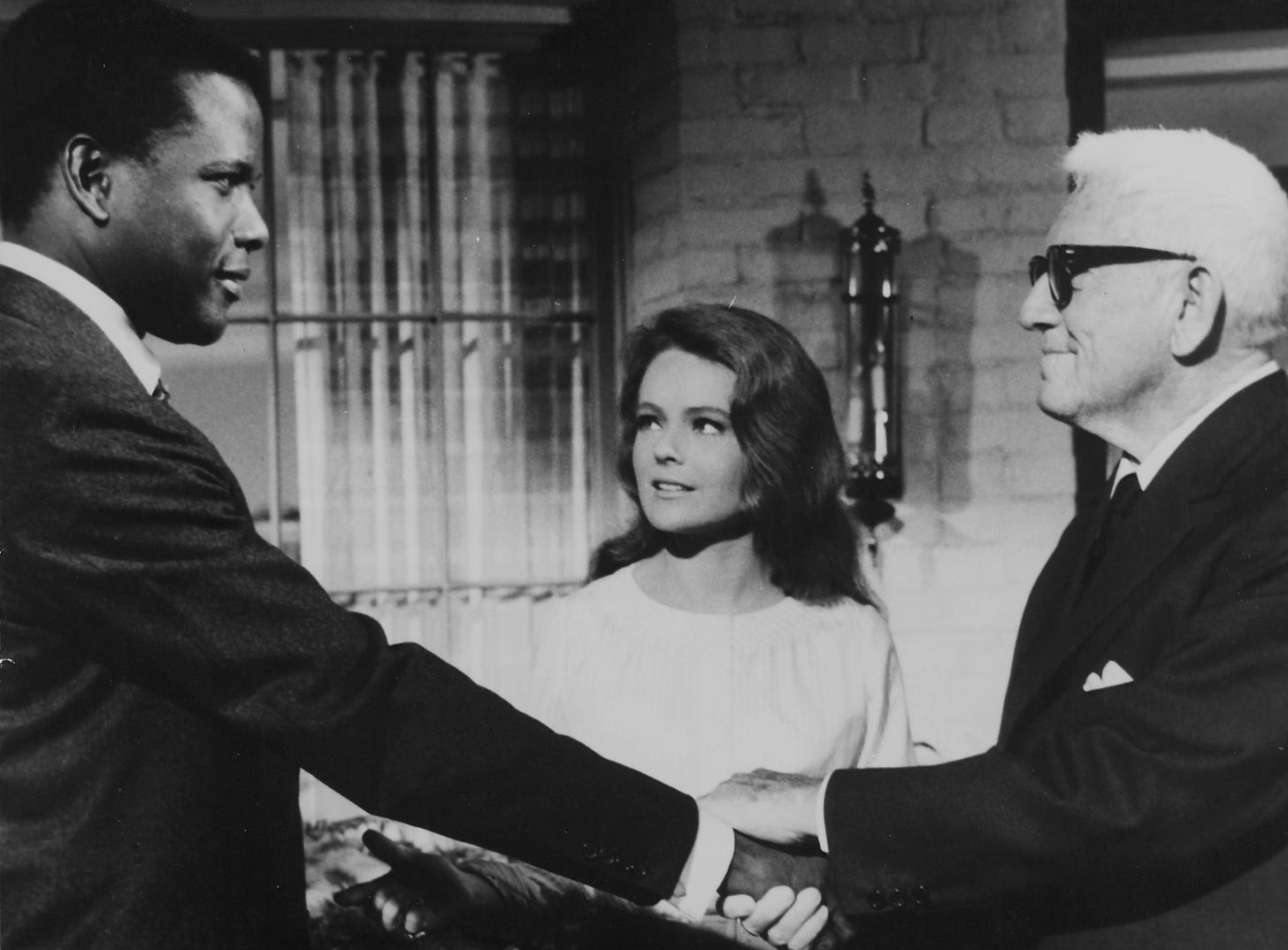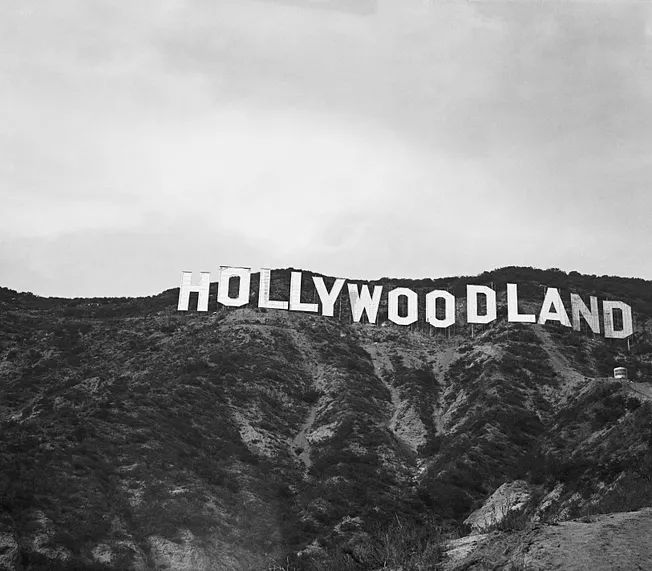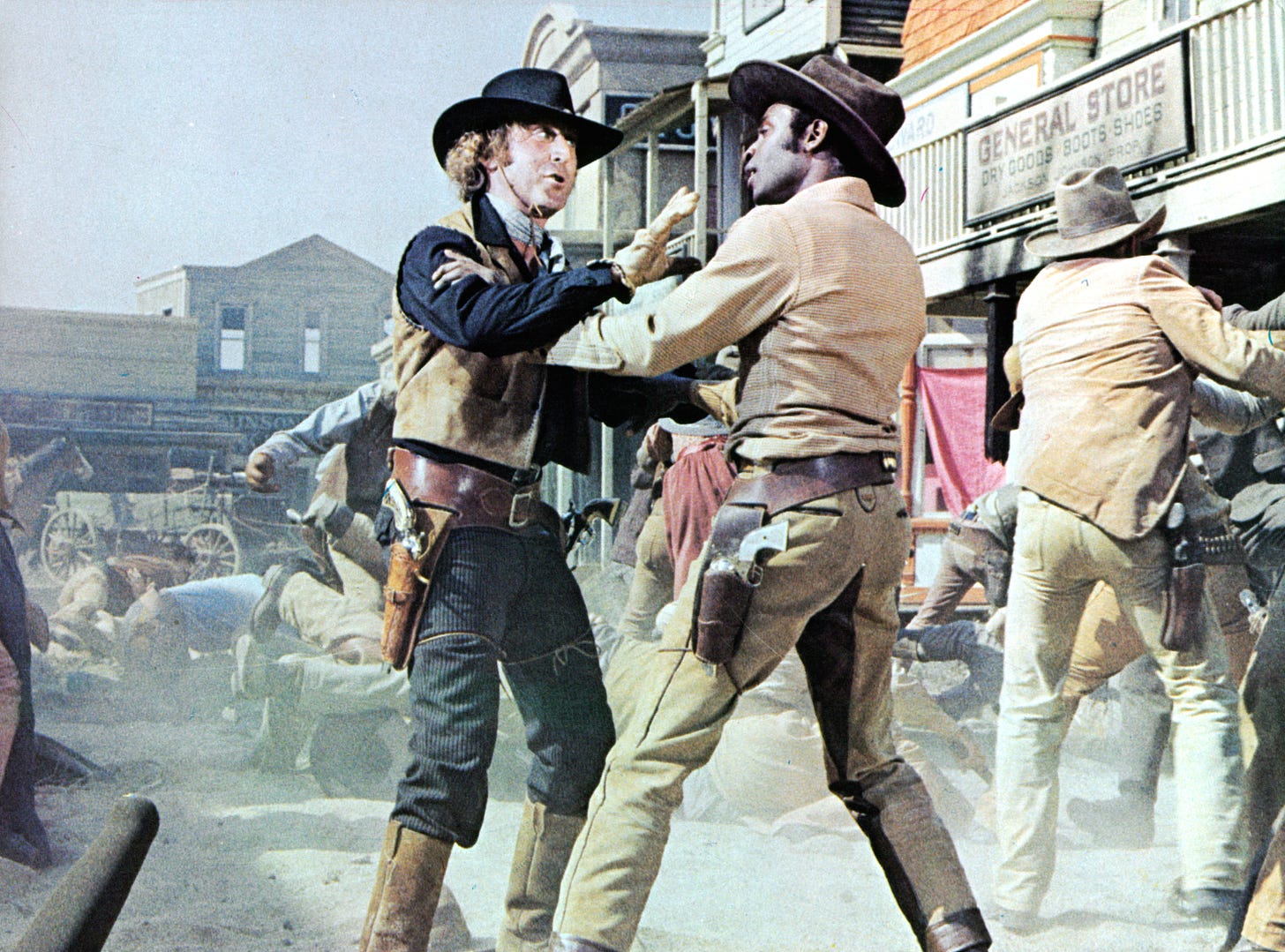A few years ago, the editor-in-chief of The Hollywood Reporter pitched a story to the newsroom. He had just come back from lunch with a well-known agent, who had suggested the paper take a look at the unintended consequences of Hollywood’s efforts to diversify. Those white men who had spent decades writing scripts—which had been turned into blockbuster movies and hit television shows—were no longer getting hired.
The newsroom blew up. The reporters, especially the younger ones, mocked the idea that white men were on the outs. The editor-in-chief, normally self-assured, immediately backtracked. He looked rattled.
It was a missed opportunity. The story wasn’t just about white guys not getting jobs. Nor was it really about the economics of Hollywood. It was about the stories Hollywood told and distributed and streamed on screens around the globe every day. It was about this massively lucrative industry that had been birthed by outsiders and emerged, out of lemon groves, into a glamorous, glitzy mosh pit teeming with chutzpah and broken hearts and unbelievable success stories that had made the American Dream a real, pulsating thing—for Americans and billions of other people who thought that if you could imagine something, anything, you could will it into being. It was a story about who we aspired to be.
After the meeting, a reporter approached another editor about pursuing it. The editor told the reporter to drop it. No one, he said, at The Hollywood Reporter—one of a handful of trade publications that covers the ins and outs of the entertainment industry—was going to risk blowing up their career over this.
The “explosion of woke,” as one longtime producer put it, didn’t come out of nowhere.
Hollywood had always pushed boundaries—from the 1947 “Gentleman’s Agreement,” which confronted antisemitism, to “Guess Who’s Coming to Dinner” (1967), which tackled interracial marriage, to “All in the Family” (1971-1979), which grappled with race and women’s liberation. The original run of “Will and Grace” (1998-2006), did more to advance the cause of gay marriage than anything else pre-Obergefell.
And then there were the villains: The vast majority—from the Terminator to Hannibal Lecter to Gordon Gekko—were uber-white: an Austrian (robot), a Lithuanian, a WASPy, pinstriped capitalist. (For the insider’s list, see this from The Hollywood Reporter.)
But it wasn’t until 2015—when the #OscarsSoWhite controversy engulfed the 87th Academy Awards—that studio chiefs and producers really started to rethink how they did business. This gained momentum in 2016, and even more in late 2017, with #MeToo.
Then came George Floyd, and, in the summer of 2020, everything that had been happening in slow motion started to happen much faster.
The Academy of Motion Pictures Arts & Sciences—the industry’s central nervous system—had been founded in 1927, and now it had 8,469 voting members. It had tried over the years, and especially since Donald Trump’s election, to catch up with the zeitgeist, inviting into its ranks a record number of new members who were black, Latino, women or foreign-born.
But that wasn’t going to cut it any longer.

So, in September 2020, the Academy launched its Representation and Inclusion Standards Entry platform (or RAISE). For a movie to qualify for Best Picture, producers not only had to register detailed personal information about everyone involved in the making of that movie, but the movie had to meet two of the Academy’s four diversity standards—touching on everything from on-screen representation to creative leadership. (An Academy spokesperson said “only select staff” would have access to data collected on the platform.)
The Academy explained that movies failing to meet these standards would not be barred from qualifying for Best Picture until 2024. But producers are already complying: In 2020, data from 366 productions were submitted to the platform.
Meanwhile, CBS mandated that writers’ rooms be at least 40 percent black, indigenous and people of color (or BIPOC) for the 2021-2022 broadcast season and 50 percent for the 2022-2023 season. ABC Entertainment issued a detailed series of “inclusion standards.” (“I guarantee you every studio has something like that,” a longtime writer and director said.)
To help producers meet the new standards, the filmmaker Ava DuVernay—who was recently added to Forbes’ list of “The Most Powerful Women in Entertainment” along with Oprah Winfrey and Taylor Swift—last year created ARRAY Crew, a database of women, people of color, and others from underrepresented groups who work on day-to-day production: line producers, camera operators, art directors, sound mixers and so on. The Hollywood Reporter declared that ARRAY Crew has “fundamentally changed how Hollywood productions will be staffed going forward.”
More than 900 productions, including “Yellowstone” and “Mare of Easttown,” have used ARRAY Crew, said Jeffrey Tobler, the chief marketing officer of ARRAY, DuVernay’s production company. Privately, directors and writers voiced irritation with DuVernay, who, they said, had exploited the “post-George Floyd moment.” But no one dared to criticize her openly. “I’m not crazy,” one screenwriter said.
Of course, Hollywood, like many industries, does have a clubiness about it. And pretty much everyone on the inside insists it should open up to those who had, for decades, been kept out. But the heavy-handed mandates, the databases, the shifting culture—in which pretty much all white men were assumed to have gotten their jobs because they had the right tennis buddies or ZIP code or skin color—raised the possibility of a new kind of clubiness. When asked whether ARRAY Crew was just replacing one kind of exclusion with another, Tobler sidestepped the question, saying the organization had sought to “amplify underrepresented professionals.”
But the result has not just been a demographic change. It has been an ideological and cultural transformation. We spoke to more than 25 writers, directors, and producers—all of whom identify as liberal, and all of whom described a pervasive fear of running afoul of the new dogma. This was the case not just among the high command at companies like Netflix, Amazon, and Hulu, but at every level of production.
How to survive the revolution? By becoming its most ardent supporter. “Best way to defend yourself against the woke is to out-woke everyone, including the woke,” one writer said. Suddenly, every conversation with every agent or head of content started with: Is anyone BIPOC attached to this?
The old-timers accustomed to being on the inside—and the (non-BIPOC) up-and-comers afraid they’d never get there—were one-part confused, one-part angry, and 10,000-parts scared.
“Everyone has gone so underground with their true feelings about things,” said Mike White, the writer and director behind the hit HBO comedy-drama “The White Lotus.” “If you voice things in a certain way it can really have negative repercussions for you, and people can presume that you could be racist, or you could be seen as misogynist.”
Howard Koch, who has been involved in the production of more than 60 movies, including such classics as “Chinatown” and “Marathon Man,” and is the former president of the Academy of Motion Pictures Arts & Sciences, said: “I’m all for LGBT and Native Americans, blacks, females, whatever minorities that have not been served correctly in the making of content, whether it’s television or movies or whatever, but I think it’s gone too far. I know a lot of very talented people that can’t get work because they’re not black, Native American, female or LGBTQ.”
Another writer, who, like most of the writers we interviewed, was afraid to speak openly for fear of never working again, said: “I get so paranoid about even phone calls. It’s so scary. My close friends and my family are just like, ‘Don’t say anything.’ It is one of those things, ‘Will I be able to sleep at night if I say anything?’ Getting jobs in this town is so hard, and I’m very grateful to have a great job. If there’s any so-called ding on my record, that would just be an argument against hiring me.”
It is, said Sam Wasson, the author of “The Big Goodbye: Chinatown and the Last Years of Hollywood,” not so different from the McCarthy era, when everyone in Hollywood professed to believe something that they thought everyone outside Hollywood—the country, their audience—believed. “Hollywood was never anti-Communist,” Wasson said. “It just pretended to be. In fact, Hollywood was never anti- or pro- anything. It was show business. There’s no morality here.”
That amorality, coupled with a finely tuned sense of what the audience is hungry for, what’s trending, has left Hollywood more susceptible to the vagaries of the culture war.
“Now, they’ll just say, ‘Sorry, diversity quotas. We’re just not allowed to hire you,’” said a 48-year-old white, male comedy writer who was recently dropped by his agent.
Zack Stentz, a writer and producer who was a screenwriter on “Agent Cody Banks” and the Marvel movie “Thor,” said, “A really toxic thing that does happen is that agents will tell their clients, especially white clients, when they don’t get a job, ‘Oh yeah, it’s because they had to hire a minority writer.’” Stentz added: “Even if it’s true, it’s not a helpful thing to say.”

One showrunner, afraid to send his emails to us out of fear of them accidentally winding up on the wrong screen, agreed to show us correspondence with agents, writers, and studio chiefs that capture the new thinking at the highest levels of the Hollywood food chain.
Sitting in his office, in a casita behind his house and next to the pool, we scrolled through the emails on his laptop:
“This one a dead end — they are going to limit search to women and bipoc candidates”
“How tied to hiring him are you? There are some internally that don’t like the idea of hiring a white guy. I wish I had a better way to frame it. Hate this shit.”
“Studio now telling us this job must go to a female / bipoc writer. Sorry — it sucks”
When we wrapped up, the showrunner said: “This is all going to end in a giant class-action lawsuit.”
The creatives who embrace this agenda think all of this is laughable, a lie, a rationalization. “HI AGENTS AND MANAGERS of white folks in this industry,” the actor and director Natalie Morales tweeted in November. “For fucks sake, please stop blaming ‘diversity hires’ for why your client isn’t getting a job. It’s either that you’re not working hard enough or that they’re not good enough. Be honest with them. You are harming us.”
Rochée Jeffrey, a black writer on “Grownish,” “Santa Inc.,” and “Woke,” said: “I don’t care if white people aren’t comfortable because black people are uncomfortable all the fucking time. I can’t tell you how many times I’ve had to bite my tongue so as not to offend white sensibilities, so I don’t give a shit if they’re nervous.”
The showrunner said that the new politics is making it hard to get work done. He added that Human Resources departments at the studios and streaming services are awash in complaints directed at white, male showrunners just for doing their job. “It’s gotten to the point where I won’t give notes on a script any longer to a woman or person of color.”
Stentz said that he hasn’t run into any problems with “young millennial staffers with more, shall we say, of a social justice emphasis.” But, he added, “I know other people have had less happy experiences.”
The writers’ room is supposed to be smart, funny, nasty, a little bawdy, the kind of place where people can make jokes and riff and wonder aloud and vomit out ideas that might become an unforgettable scene. Another showrunner in his mid-fifties (white, male, unfortunately) said: “You’re not allowed to pick your staff anymore, and studios won’t let you interview anybody who isn’t a person of color.”
He added that the culture of documenting even the slightest of slights makes him anxious. “I’m sitting in a room trying to run a show with a collection of people I don’t totally trust.”
The politicization of content production, creatives said, was going to be the industry’s death knell. “Especially this past year, ideology has become more important than art,” Quentin Tarantino said in June on Bill Maher’s show. “It’s like ideology trumps art. Ideology trumps individual effort. Ideology trumps good.”
Exhibit A: “Woke.”
The comedy series, which premiered on Hulu in September 2020, should have been the statement on America right now. It’s about a black cartoonist who is awakened to systemic racism after a run-in with the cops.
The show started off on the right foot: the showrunner, Aeysha Carr, and the writers room she oversaw, delivered a strong batch of early scripts, according to several writers on the show.
Then the producers weighed in. “The notes were all so sanctimonious,” one writer said. “It was never supposed to be as serious as it was. We wanted a thought-provoking show that made fun of woke culture and explored notions of what a black artist’s life would be like in San Francisco among white liberals. But we could only punch down at the safest targets”—white men.
The irony was not lost on anyone: The black writers, starting with Carr, were more willing to take risks and poke fun at antiracist orthodoxy.
This led to creative differences, and soon, Carr, a black woman, was out. She was replaced by Zander Lehmann, a white man.
Then, Lehman was out, too—replaced by Jay Dyer, who is black. “Jay was brought on toward the end for optics,” a black writer on the show said. “Any black guy would do. That was the energy I got.” (Carr and Keith Knight, a co-creator of the semi-autobiographical show, declined to comment.)
The quality of the scripts suffered, and the show, which premiered in September 2020, landed a 53 percent “green splat” average audience review on Rotten Tomatoes.
In late 2020, Hulu renewed “Woke” for a second season. It also replaced Dyer with a fourth showrunner—Anthony King, who is white. (King did not reply to an email seeking comment.)
Kevin Parker, a black talent manager at Artists First, said the skeptics miss the point. “This whole diversity thing—it’s about money,” Parker said. Artists First represents some of the most successful black people in Hollywood, including Jordan Peele, Tiffany Haddish, Regina Hall, Kenya Barris, the creator of “Black-ish,” and Marshall Todd, a co-creator of “Woke.” Recently, the firm moved from its old digs, in Beverly Hills, to a bigger office in Century City. “It’s good business to tell more stories from different perspectives, and that’s all this really is,” Parker said.
Shows like Donald Glover’s award-winning “Atlanta,” Issa Rae’s “Insecure” and Michaela Coel’s “I May Destroy You” are all part of this new investment. The first two episodes of “Atlanta,” which aired September 6, 2016, reeled in 1.6 million viewers, surpassing the record for a basic cable comedy premiere, previously held by “Inside Amy Schumer.” “Insecure” just wrapped up a five-season run.
“Maybe it’s 15 percent about the belief that it will bring more people into viewing content, and 85 percent about the fear of being attacked on social media or in places like the Hollywood press or The New York Times,” a writer and producer said. “You’ve got to be insane not to have at the forefront of your mind all of these racial and gender and trans issues when you’re writing something. You have to worry about the impact that everything you do will have on your career. And that has an obvious chilling effect on creativity.”
We emailed Franklin Leonard, the founder of the Black List—the point of which is to elevate voices that might otherwise not get elevated—to talk about the industry’s marked shift: What was driving it? And where did it go next? He declined to comment.
There was a feeling, among those who didn’t hew to the new orthodoxy, that it was becoming harder not only for certain people to find work but for a certain kind of content—ballsier, more provocative—to get made.
They were scared of what was happening. The fear, one prominent director said in an email, is “the audience stops trusting us. They begin to see us as a community twisting ourselves into a pretzel to make every movie as woke as possible, every relationship mixed racially, every character sexually fluid, and they decide that we are telling stories set in a fantasyland instead of a world they know and live in. If that happens, and they decide to throw themselves instead into video games 24/7, we will lose them.”
Movies and shows that were once widely acclaimed but are now verboten, writers and directors said, included “Blazing Saddles,” even though it was co-written by Richard Pryor; “The Bad News Bears,” even though it featured a multiracial cast; “Tootsie,” because transgender activists; and “Rocky” (“bad guy CANNOT be black,” a director explained in an email). Nor would “The Wizard of Oz” get greenlit. (“The munchkins? Forget it,” the director said). Nor would “All in the Family,” probably the most influential show of the 1970s. (“Archie Bunker”—the main character—“is basically a Trump voter,” a producer explained.) “South Park,” which debuted in 1997, has been grandfathered in. “Otherwise, no way,” another producer said.
All of which may explain the very strange story of the brand new $484 million Academy Museum of Motion Pictures.
In September, the Academy threw a gala celebrating the opening of the museum. Attendees included Sophia Loren, Guillermo del Toro, Jennifer Hudson, Issae Rae, Orlando Bloom and Katy Perry. Lady Gaga performed. Vogue covered it the way Vogue covers things. Ted Sarandos, a co-CEO of Netflix and the chair of the museum’s board, gave a speech. (In what is now common practice in places like Los Angeles, an elder from the local Tongva tribe kicked things off with a blessing and “land acknowledgement.” The sanitation worker whose job it was to clean the podium between speakers dutifully wore his mask. The speakers did not.)
The museum features an iconic, spherical 33,000-square-foot theater designed by Renzo Piano, stunning exhibitions, and a two-story restaurant called Fanny’s, named after Fanny Brice, the actor and comedienne.
But, oddly, it’s missing any mention of the small band of mostly Jewish emigres from Eastern Europe, who created the film industry. The people without whom there would be no entertainment industry.
In today’s climate—in which inclusion and diversity are said to be so important—it was an especially ironic omission: The Jews were excluded from almost everywhere. Their success signaled the inclusivity and possibility that only Hollywood could afford them. The rise of the industry’s founding fathers should have been an inspiring origin story around which everyone in the community could rally. The link between then and now seemed obvious.
Most of the media that reported on the museum missed this. (Sharon Rosen Leib, writing in the Jewish newspaper The Forward, did not.) It was as if they wanted to pretend that huge chunks of Hollywood’s past hadn’t been airbrushed out.
More to the point, it was as if they wanted to forget that Hollywood was not the cartoon it was being made out to be, suggested Sam Wasson, the author. “Hollywood, at its best, was meritocratic,” said Wasson, who wrote about the museum for Airmail. “If you don’t believe me, just watch the movies of the great filmmaking eras.”
Howard Koch, who ran the Academy when it greenlit the museum, said the museum’s higher-ups had been made aware of their oversight. “Let me say that that wrong will be righted very soon,” he said. (This appears to be a six-week program on Jewish, Austrian emigres who fled the Nazis to make movies in Hollywood.)
It is important not to lose sight of the backdrop against which all of the above has happened. On this, pretty much everyone agrees.
Over the past decade, the streaming services have upended old business models and imposed a new ruthlessness on an industry that was already pretty ruthless.
For years, the real money in Hollywood came from the television channels that broadcast reruns and old movies; residuals meant creatives were paid handsomely. But with the rise of Netflix, Amazon and other streaming services, that model collapsed. And the vast majority of creatives had to make do with less.
Now, most people in the industry do not earn enough to support a family of four in Los Angeles. As money has gotten tighter, people have gotten angrier, and things have gotten uglier. “I’d say all that probably expedited the radicalization,” a longtime Hollywood creative said of the shifting marketplace.
Mike White said that it is a lot easier for Hollywood to talk about race than class. We asked him if the two college women in “The White Lotus”—which revolves around a handful of guests at a Hawaiian resort—were inspired by the twentysomethings starting out in writers’ rooms in Hollywood. He said he didn’t know. (White wrote “The White Lotus” by himself.)
“But yeah,” White said, “young girls are kind of a good vehicle to explore that, because it has this sense of trendiness and lingo and hip speak mixed with this idea of who’s cool and who’s not cool and has very little to do with—they have very little skin in the game. That’s the essence of what I find disturbing about some of the stuff on the left. Does this have anything to do with making life better for anyone, or is this just a game? Is this just about making you feel superior?”
Peter Kiefer and Peter Savodnik are both writers based in Los Angeles. Peter Kiefer’s latest story, for Los Angeles Magazine, was about the ultimate Twitter power broker. Peter Savodnik’s most recent story for Common Sense was about Havana Syndrome.









